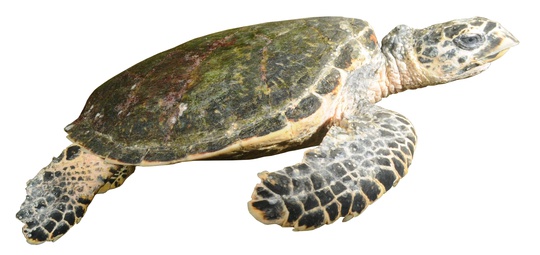Hawksbill turtle
Eretmochelys imbricata

(Image credit: David Harasti)
Hawksbills have overlapping scales, a trait unique to this species. Their undersides are cream coloured with occasional black spots. They have a distinctive beak-like mouth and narrow head. Hatchlings have a dark brown carapace and plastron (under part of the shell).
IUCN Red List of Threatened Species: Critically endangered
Length: Carapace up to 80 cm
Habitat
This species inhabits tropical and some subtropical regions in the Atlantic, Pacific, and Indian Oceans. Found in tidal and subtidal coral and rocky reefs in tropical and subtropical waters of all oceans of the world. In Australia the main feeding areas are the east coast, including northern New South Wales, the Great Barrier Reef, and the Torres Strait; the Northern Territory; and Western Australia down to Shark Bay; 0-20 m depth
Log it
Turtle distribution and movement patterns are not well know, so please log this species wherever it is spotted in New South Wales, Victoria, Tasmanian, South Australia and Southern Western Australian waters
Related links/info
Species names on the Redmap site are based on the Codes for Australian Aquatic Biota or CAAB (http://www.cmar.csiro.au/caab/). This is updated regularly and lists the approved common name, family, species name and more.
Redmap species descriptions were provided by Dr. Christine Fury and where applicable with permission from the following books:
Australian Marine Life: The Plants and Animals of Temperate Waters by G. J. Edgar, Revised (2008) Reed Books, Melbourne
Fishes of Australia’s Southern Coast, Edited by M. Gomon. D. Bray and R. Kuiter (2008) Reed Books, Melbourne
Fishes of Tasmania by P. Last, E. Scott and F. Talbot (1983). Tasmanian Fisheries Development Authority, Hobart











